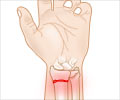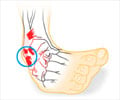Q: Which doctor should I consult for skier’s thumb?
A: A person with skier’s thumb should consult a hand or orthopedic surgeon.
Q: Can a skier’s thumb be completely normal again?
A: Yes, if proper treatment is followed, then skier’s thumb can be normal again.
Q: How much time will it take for a skier’s thumb to heal?
A: Many sportspersons are able to return to their sport within 4 to 6 weeks or even sooner depending on the seriousness of the injury. However for complete healing to take place it would take 3 to 4 months. It is necessary that strengthening exercises are done to regain the lost strength of the thumb.
Q: What are the chances of success of surgery?
A: The chances of success of surgery are very good provided all instructions and exercise is followed. It is important to give rest for up to 3 to 4 months for the ligament to fully heal after surgery before normal activity is resumed.
Q: Are there any possible complications of surgery?
A: Surgery may be associated with infection, stiffness and scar formation over the incision.
The other complications can be an injury to the sensory nerves that runs close to the ligament and this may result in small area of numbness on the inner side of the thumb. Injury to nerve can happen due to injury or due to the surgery. If the nerve injury can be identified, the nerve can be repaired during surgery.
Stiffness is usually reversible and occurs due the thumb being kept immobilized. Once exercise is started the stiffness would go away.
Q: What if no treatment is taken up for skier’s injury?
A: No treatment will result in a weak joint area like in Gamekeeper’s thumb. The longer the joint is left unstable the lesser the chances of success of the surgery.
Q: What are the complications usually associated with this type of thumb injury?
A: Complications of the skier’s thumb injury include osteoarthritis of the joint, damage to nearby blood vessels or nerves, instability of the joint, and non-union or mal-union of the fractured part of the bone.








